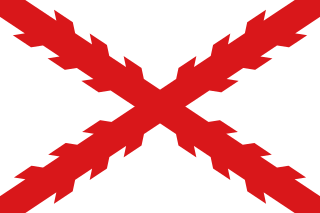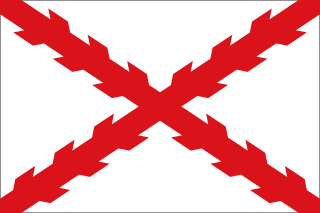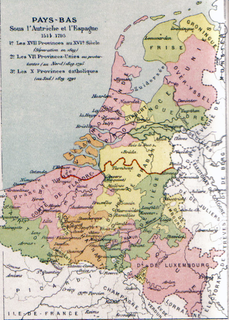 W
WHabsburg Netherlands, in Latin referred to as Belgica, is the collective name of Renaissance period fiefs in the Low Countries held by the Holy Roman Empire's House of Habsburg. The rule began in 1482, when the last Valois-Burgundy ruler of the Netherlands, Mary, married Maximilian I of Austria. Their grandson, Emperor Charles V, was born in the Habsburg Netherlands and made Brussels one of his capitals.
 W
WThe Seventeen Provinces were the Imperial states of the Habsburg Netherlands in the 16th century. They roughly covered the Low Countries; that is, what is now the Netherlands, Belgium, Luxembourg, and most of the French departments of Nord and Pas-de-Calais (Artois). Also within this area were semi-independent fiefdoms, mainly ecclesiastical ones, such as Liège, Cambrai and Stavelot-Malmedy.
 W
WThe Southern Netherlands, also called the Catholic Netherlands, was the part of the Low Countries largely controlled by Spain (1556–1714), later Austria (1714–1794), and occupied then annexed by France (1794–1815). The region also included a number of smaller states that were never ruled by Spain or Austria: the Prince-Bishopric of Liège, the Imperial Abbey of Stavelot-Malmedy, the County of Bouillon, the County of Horne and the Princely Abbey of Thorn. The Southern Netherlands were part of the Holy Roman Empire until the whole area was annexed by Revolutionary France.
 W
WThe Privy Council or Secret Council in Brussels was one of the three "collateral councils" that together formed the highest government institutions of the Habsburg Netherlands. It was particularly charged with legal and administrative questions.
 W
WThe Dutch Revolt (1566–1648) was the revolt in the Low Countries against the rule of the Habsburg King Philip II of Spain, hereditary ruler of the provinces. The northern provinces eventually separated from the southern provinces, which continued under Habsburg Spain until 1714. The northern provinces adopted Calvinism and Republicanism whereas the southern provinces became wholly Catholic again due to the expulsion of Protestants and the efforts of the Counter-Reformation and remained under absolutist rule. The Dutch Revolt has been viewed as the seedbed of the great democratic revolutions from England, to America to France.
 W
WThis article covers the science, art and industry of cartography by the people of the Low Countries in the early modern period, especially in the early 16th to early 18th centuries. It includes cartography of the Netherlands and cartography of the Low Countries in general. It also includes Dutch colonial cartography, i.e. cartography in the Dutch overseas world, in the early modern period.
 W
WEarly Netherlandish painting is the work of artists, sometimes known as the Flemish Primitives, active in the Burgundian and Habsburg Netherlands during the 15th- and 16th-century Northern Renaissance, especially in the flourishing cities of Bruges, Ghent, Mechelen, Leuven, Tournai and Brussels, all in present-day Belgium. The period begins approximately with Robert Campin and Jan van Eyck in the 1420s and lasts at least until the death of Gerard David in 1523, although many scholars extend it to the start of the Dutch Revolt in 1566 or 1568. Early Netherlandish painting coincides with the Early and High Italian Renaissance but the early period is seen as an independent artistic evolution, separate from the Renaissance humanism that characterised developments in Italy, although beginning in the 1490s as increasing numbers of Netherlandish and other Northern painters traveled to Italy, Renaissance ideals and painting styles were incorporated into northern painting. As a result, Early Netherlandish painters are often categorised as belonging to both the Northern Renaissance and the Late or International Gothic.
 W
WFlemish painting flourished from the early 15th century until the 17th century, gradually becoming distinct from the painting of the rest of the Low Countries, especially the modern Netherlands. In the early period, up to about 1520, the painting of the whole area is typically considered as a whole, as Early Netherlandish painting. This was dominated by the Flemish south, but painters from the north were also important. Dutch and Flemish Renaissance painting, of which Antwerp became the centre, covers the period up to about 1580 or later, by the end of which the north and south Netherlands had become politically separated. Flemish Baroque painting was especially important in the first half of the 17th century, dominated by Rubens.
 W
WFrom the 15th century onwards, the Great Council of the Netherlands at Mechelen was the highest court in the Burgundian Netherlands. It was responsible for the Dutch-, French- and German-speaking areas. In Luxembourgish the phrase "mir ginn op Mechelen" still means playing one's last trump card. The Grote Raad first sat in the Schepenhuis in Mechelen then, from 1616, in the (old) palace of Margaretha of Austria on Keizerstraat.
 W
WThe Renaissance in the Low Countries was a cultural period in the Northern Renaissance that took place in around the 16th century in the Low Countries.
 W
WSpanish Netherlands was the name for the Habsburg Netherlands ruled by the Spanish branch of the Habsburgs from 1556 to 1714. They were a collection of States of the Holy Roman Empire in the Low Countries held in personal union by the Spanish Crown. This region comprised most of the modern states of Belgium and Luxembourg, as well as parts of northern France, the southern Netherlands, and western Germany with the capital being Brussels.
 W
WThe States General of the Netherlands is the bicameral legislature of the Netherlands consisting of the Senate and the House of Representatives. Both chambers meet at the Binnenhof in The Hague.
 W
WThe Treaty of Senlis concerning the Burgundian succession was signed at Senlis, Oise in May 1493 between Maximilian I of Habsburg and King Charles VIII of France.